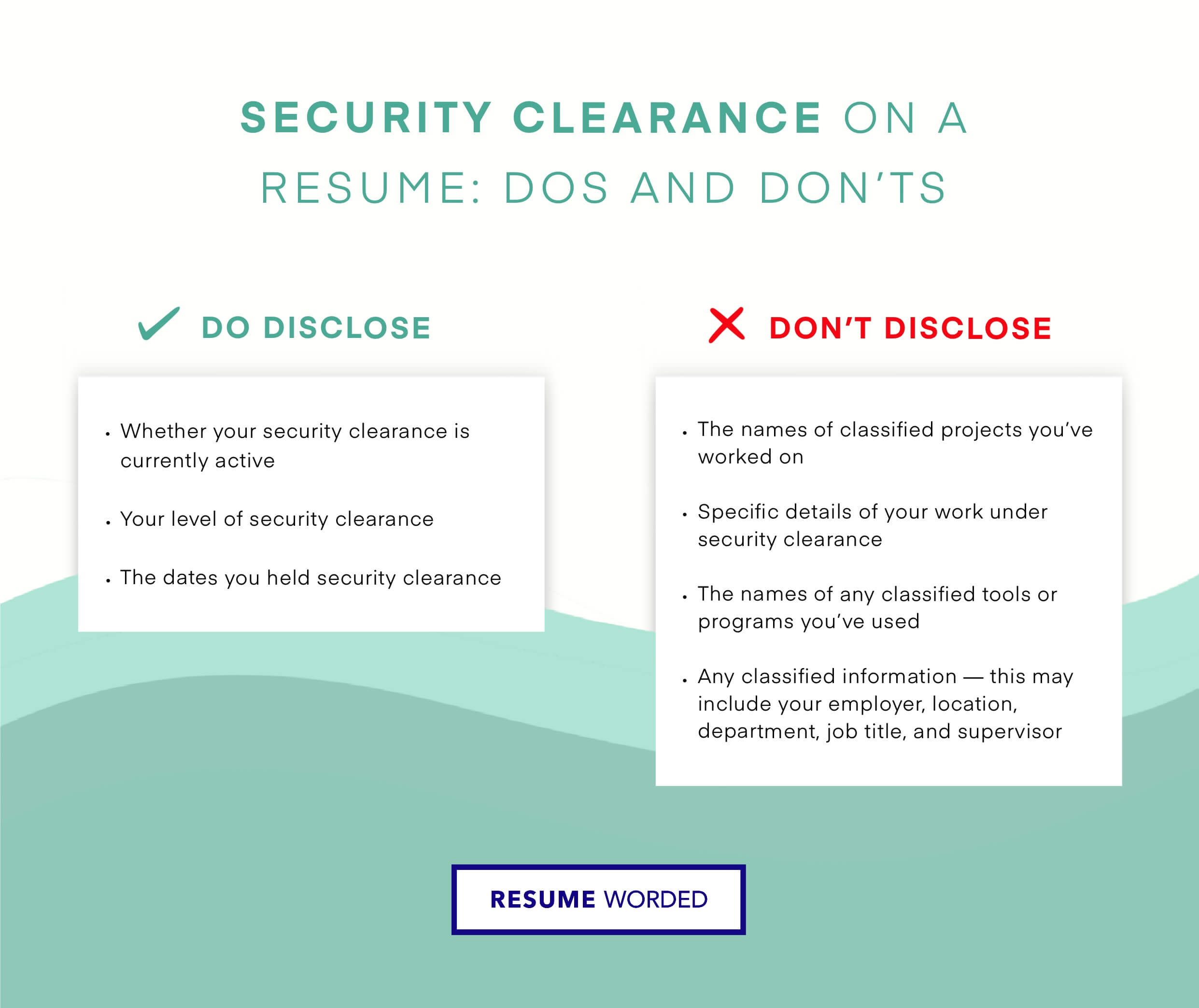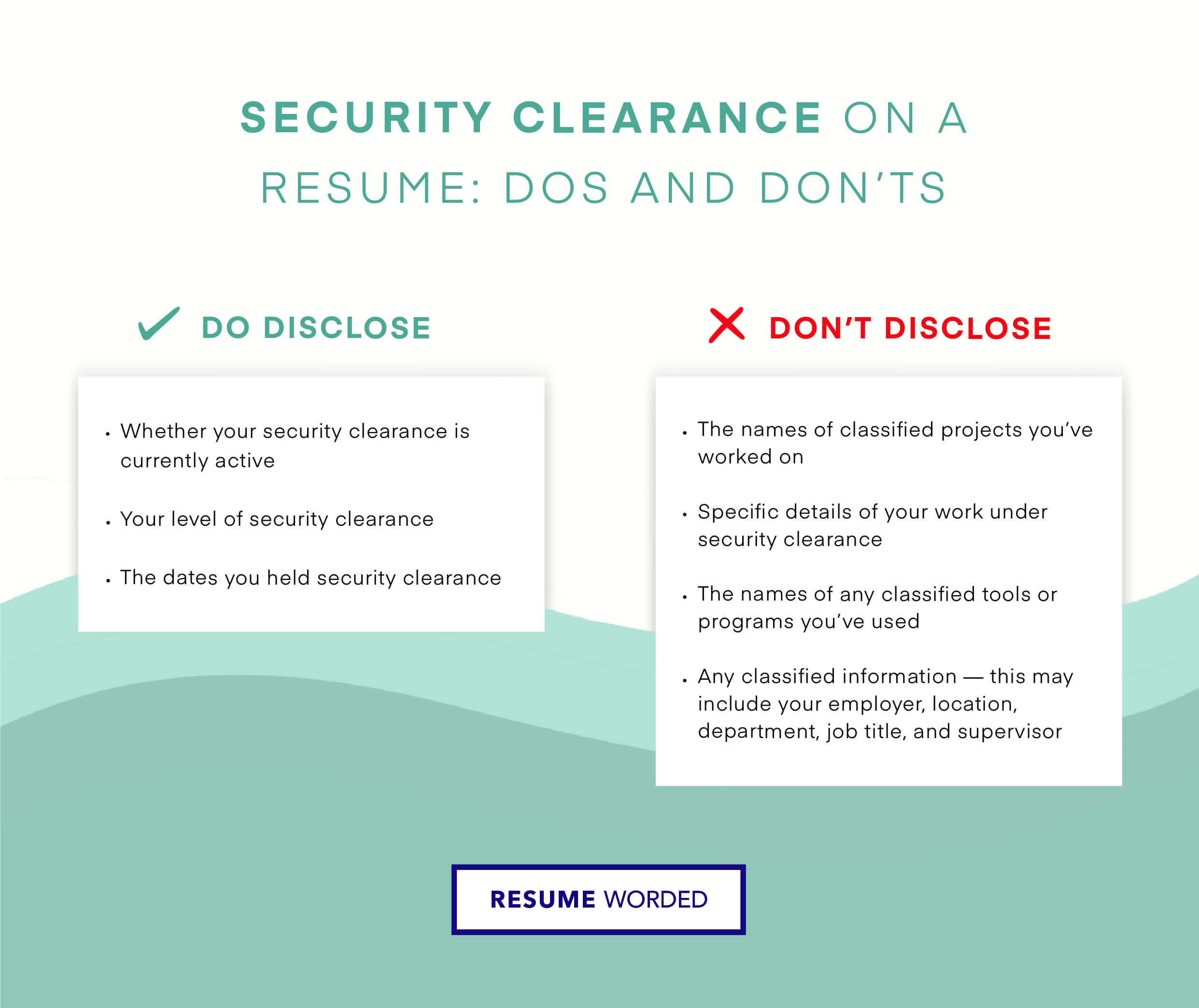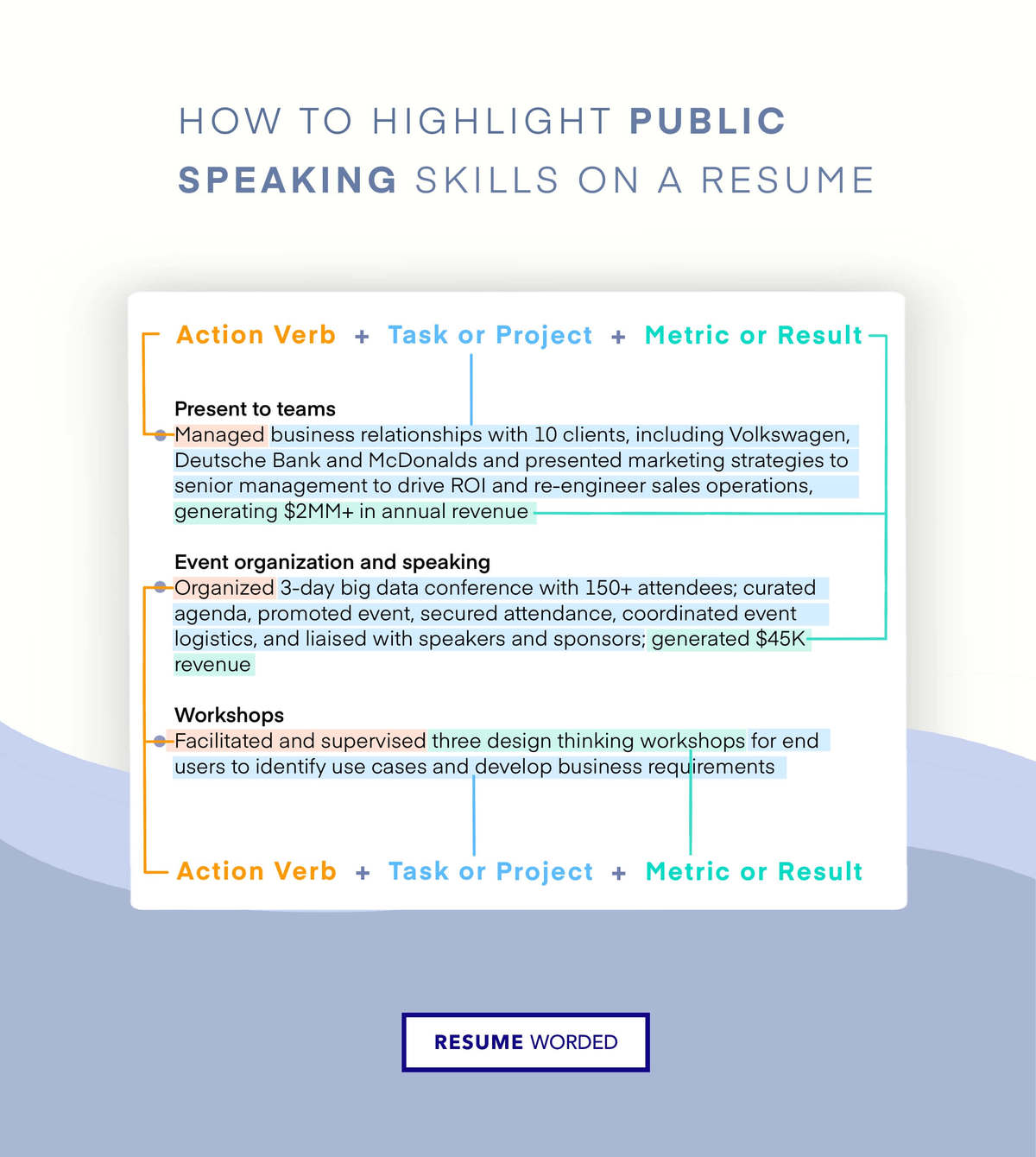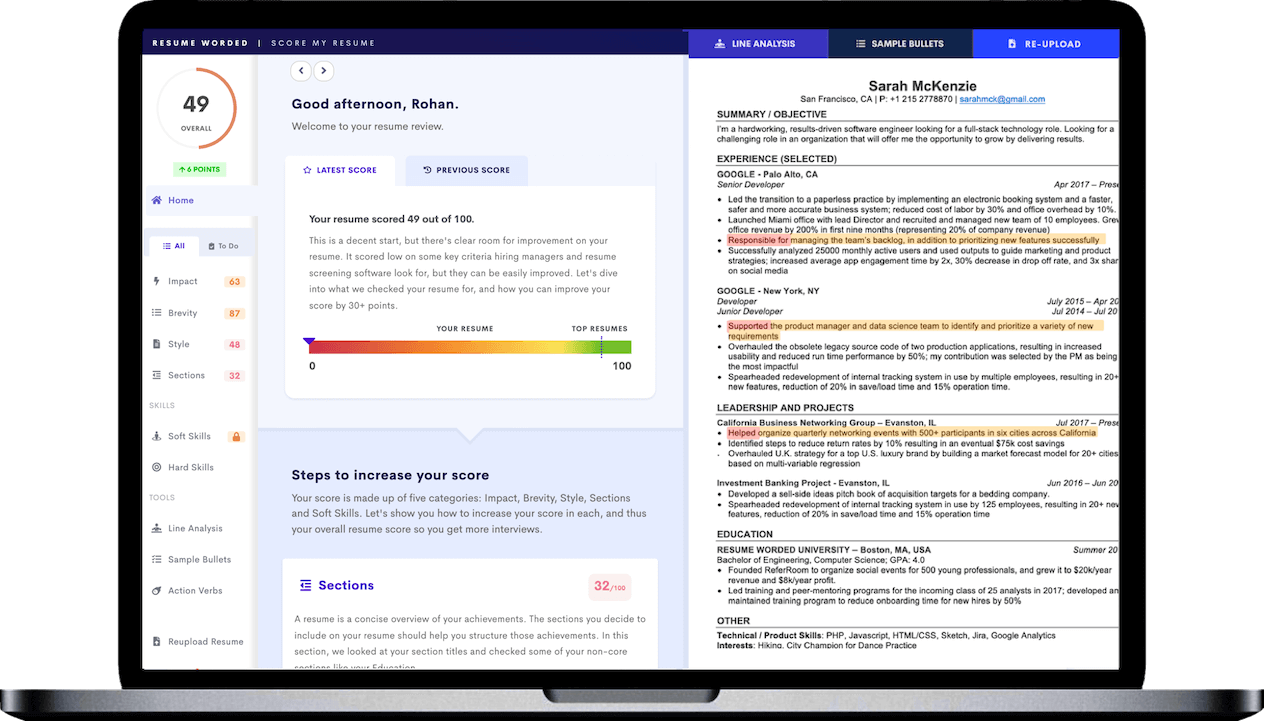Security clearance isn’t just for international men of mystery. Plenty of jobs — particularly those in the government or military — require security clearance. But what does that involve, really?
In this guide, we’ll discuss when you should (and shouldn’t) disclose security clearance on your resume and show you examples of how to do it. We'll also answer any burning questions about exactly what it means to have security clearance, including different clearance levels and when you need them.
If you just want the facts, you can jump straight to our sections on:
- Security clearance levels
- What jobs require security clearance
- How to get security clearance
- Factors affecting security clearance
- Why you could be denied security clearance
- Where to find out more information
What is security clearance?
In short, security clearance is a tiered system used in jobs that involve classified information or matters of national security. This often applies to military and government positions but can also cover civilian contractors and jobs in the private sector.
We'll get into more details later, but first, let's go over the basics — exactly what to put on your resume when disclosing security clearance and where to list it.
How to list security clearance on a resume: Do's and don'ts
Not sure how much information you should disclose when listing security clearance on your resume? Here’s what information you should include — and what you should hold back.
Do disclose:
- Whether your security clearance is currently active
- Your level of security clearance
- The dates you held security clearance
Don’t disclose:
- The names of classified projects you’ve worked on
- Specific details of your work under security clearance
- The names of any classified tools or programs you’ve used
- Any classified information — this may include your employer, location, department, job title, and supervisor

Where to put security clearance on your resume (+ examples)
There are a few different ways you can choose to list security clearance on your resume:
- In your resume header
- In your resume summary
- In your work experience bullet points
- In an additional section
Let’s take a look at some examples of what each of those should look like.
As a subheader
If you’re applying for a position where security clearance is essential, it can be best to put that information front and center. To emphasize that you have current security clearance, simply add a line underneath your name but above your contact details that says “Security Clearance.”
Example:
In a resume summary
If you’re using a resume summary, that can be the perfect place to mention your current security clearance. This doesn’t have to take up a lot of space — at the end of your resume summary, simply add a line that says “active security clearance” (or, optionally, specify your level of clearance).
Example:
In your work experience section
If you don’t feel like adding extra sections — or if working with classified information was a major part of your job — you can also add it to your bullet point accomplishments. Toward the end of your accomplishments, add a bullet point that says something like “maintained active security clearance.” To really drive home your ability to work discreetly with sensitive information, you can include accomplishments relating to your work on confidential projects — without violating any NDAs, of course.
Example:
In an additional information section
If you want to get specific about your active (or inactive) security clearance, you can add an additional section toward the end of your resume. This could be a separate “Clearance” section or a “Security Clearance” subheading within an all-purpose “Additional Information” section. In this section, specify your level of security clearance, when you held it, and whether it’s currently active or expired.
Example:
If you’re wondering what else, like security clearance, should or shouldn’t be included on your resume, upload it to the tool below to get a detailed review with suggestions on what you need to add or remove from your resume.
When to disclose security clearance on your resume
Now that you know how to disclose security clearance on your resume — should you?
Yes, if it’s relevant.
Here are some situations when it can be helpful to list security clearance on your resume:
- You’re applying to a job that needs the same type of security clearance you already have — for example, if you’re transferring from one military or government position to another. This can indicate that there’s no need for additional background checks and can speed up the process.
- You’re applying for a job that requires a different type of security clearance than you currently hold. In this situation, you’ll still need to go through the process again, but having held any type of security clearance can reassure a potential employer that this will go smoothly.
- You have inactive or expired security clearance. Even if your clearance has expired, it can be helpful to indicate that you’ve held it previously.
- You’re applying for a job that doesn’t require official security clearance but does involve handling sensitive or confidential information.
Everything you need to know about security clearance
What are the levels of security clearance?
There are three clearance levels used by the federal government:
Confidential:
- Basic level of security clearance
- Needed to access information that may cause a risk to national security
- Requires a National Agency Check with Local Agency and Credit Check (NACLC)
- Must be reinvestigated every 15 years
Secret:
- Mid-level security clearance
- Needed to access information that may cause a serious risk to national security
- Must be reinvestigated every 10 years
- Requires a NACLC
Top Secret:
- Highest level of security clearance
- Needed to access information that may cause a severe risk to national security
- Must be reinvestigated every 5 years
- Requires a Single Scope Background Investigation (SSBI)
There may be two additional types of security clearance required for specific classified information:
Sensitive Compartmented Information (SCI):
- A subset of Classified National Intelligence
- Includes intelligence sources, methods, and processes
Special Access Program (SAPs):
- Provides additional protection for highly sensitive projects
- Restricted to a minimum number of personnel with security clearance
When do you need security clearance?
Security clearance isn’t just for people in high-ranking positions. Any job that involves interacting with classified information or high-security settings may require security clearance, from CEOs to administrative and janitorial staff.
In particular, you may need security clearance if you instent to work for:
- Central Intelligence Agency
- Federal Bureau of Investigation
- Drug Enforcement Administration
- Homeland Security
- Defense Intelligence Agency
- Office of National Security Intelligence
- Civilian contractors working on matters of defense or national security
How can you get security clearance?
Exactly what’s involved in security clearance will depend on your role, sector, and level of clearance. Different clearance levels also depend on what industry you’re in — clearance levels used by private companies may not be the same as those used by government agencies.
Note that you can't apply for government-level security clearance on your own — you need to already be in a job that requires security clearance for it to be granted (on a "need to know" basis).
What factors affect security clearance?
Applications for Classified, Secret, or Top Secret security clearance take into consideration your:
- Stability
- Trustworthiness
- Reliability
- Discretion
- Character
- Honesty
- Judgment
- Citizenship
- Loyalty to the United States
Why might security clearance be denied?
The most common reason for security clearance to be denied is failing a credit check. Other common reasons include criminal records and foreign activities. If you're denied security clearance, you'll notified of the reasons and any avenues for filing an appeal.
How can I find out more about security clearance?
You can find more information at the U.S. Department of State website.










